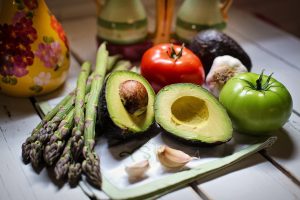Pesticide Use In Canadian Fruits and Vegetables
It’s that time of year again! Fresh fruits and vegetables are in season, and Canadians will be flocking to the farmers markets for the freshest produce available. Although we all want to buy all organic produce to avoid pesticide use, this is not always possible for every person. And it’s not always possible for every budget.
In light of supporting local farmers, we can do this without having to buy everything organic. All while remaining educated on the amount of pesticide residue that makes its way into our kitchens. The elimination of pesticide use for every farmer is simply not going to happen, but there are definitely ways around avoiding having harmful chemicals in your foods. Sometimes even if this means mixing it up by buying some organic products, and some that are ordinarily grown without the use (or overuse) of pesticides.
Among the growing concern for our health considering all things pollution and pesticide based, we have become more aware of what we breath, eat, and how we live. Every year, there is a list made available to Canadian consumers. This list allows us to be better educated on what we can safely enjoy, and what should really be avoided in the 2017 produce roster.
10 of the Top Foods That Can be Bought Safely Without Pesticide
- Asparagus

- Onions
- Cabbage
- Eggplant
- Cauliflower
- Grapefruit
- Frozen Sweet Peas
- Honeydew Melon
- Avocado (yes, avacado!)
- Cantaloupe
5 of the Top Foods to Avoid, or to Buy Organic
- Spinach
- Potatoes
- Tomatoes
- Bell Peppers
- Strawberries
Aside from avoiding certain foods altogether, there are tips and tricks that should be a regular part of your food preparation routine. These practices will help to avoid excess pesticide residue, things that can easily be implemented in your daily life:
- The outside leaves of leafy vegetables should be removed. From lettuce to kale, to brussel sprouts, simply removing and discarding the outside leaves will remove the pesticide residue from these vegetables.
- Wash all of your fresh fruits and vegetables before eating them. Some people swear by using special detergents for their produce, but a simple 30 second rinse and rub is often all you’ll need to wash away pesticide residue.
- Scrubbing foods like potatoes and apples with a soft scrub brush will clean them up, and give you peace of mind when you are preparing your favorite dishes or snacks.
- Cooking your produce diminishes the amount of pesticide residue left in your foods.
All things considered, The Canadian Food Inspection Agencies rules around pesticide use are more rigid than those of our American neighbours. Buying local, or buying Canadian, will ensure your foods have less pesticide residue than buying foods imported from the U.S.
Pesticide Knowledge is Key
Although buying U.S. produce can’t (or won’t) always be avoided, it’s important to know what you’re working with. Learning how to make better choices while implementing better routines by the way of food cleanliness and preparation is key. Pesticide consumption comes with its own set of potential long term health implications. Making more informed choices will only lead you to a healthier you.
Considering the recommended daily consumption of fruits and vegetables is 8-10 servings for adults, and children needing 4-6 daily servings, pesticide use in your produce should be highly considered while stocking your kitchen. Paired with a routine of washing your produce, you are already a step ahead in ensuring your meals are not only delicious, but are healthy as well.
We can all agree that preparing foods with “in season” produce is what takes our meals to the next level of freshness and flavour. And well, when we know better we do better. Hopefully this list can let you walk into the grocery store, or to the farmers market armed with important knowledge. Now you can have the confidence to feed yourself and your family without being concerned about pesticide use. We can, and should, all easily remain excited about the farmers markets, and our wellness this season.
_________________________________________________________
Thank you so much for visiting! I hope you have found some valuable information, if so, I’d love to hear about it! Please feel free to share this post with anyone who might benefit, and comments are always welcomed and appreciated.
I look forward to connecting with you next time!
And be sure to check out why you should order your family’s next meal courtesy of Ki’s Kitchen

From our kitchen to yours,
Love + Peace
Kiran

[…] needed to allow your immune system to work at maximum capacity. Choosing organic when you can (see previous post on choosing in season and organic produce) will change the way your body performs too. And it changes the way your body naturally fights off […]
[…] You don’t have to go to the grocery store and fill your cart with alkaline foods only. A good general rule of thumb is a combination of 60-80% alkaline foods, and 20-40% acidic foods. When out, choosing fresh foods rather than fast food is a healthier option, and a better way to stay on track nutritionally. In addition, pesticides are acid forming, so choose organic foods when possible. Find a list of foods better bought organic here. […]